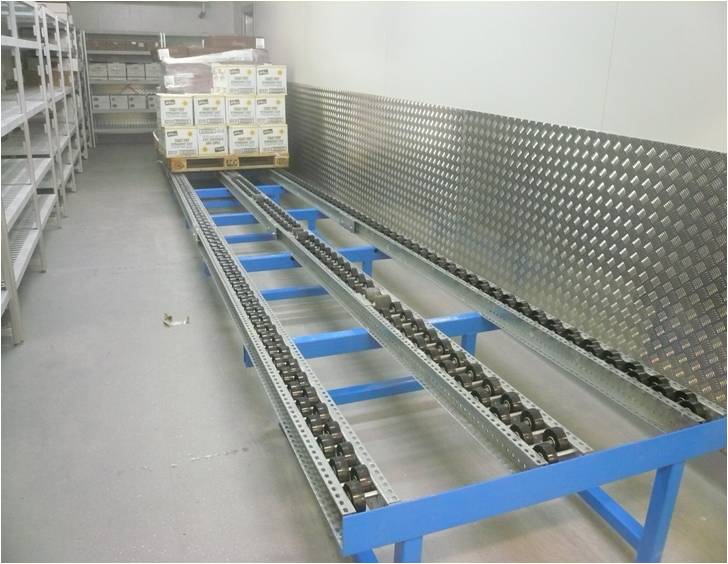
“What is now was once only imagined” (William Blake Hungarian biochemist and Nobel prize winner)
Suppliers to the foodservice industry spend considerable time and money to ensure that the information and data on their products is as easy to use and available as possible. This convenience is taken even further by proprietary product data libraries that have in one place the full range of fixtures and equipment that can be used for the design of fit for purpose foodservice facilities. While it is very convenient and time saving, it inevitably limits choice and can be a barrier to exploring alternatives for optimum solutions.
There will of course always be the “time, risk and fees” issue that drives the need for the most efficient design process. But taking advantage of the convenience of the information availability as the basis for the design solutions risks the office or design studio developing a one size fits all approach which while enabling speedy and efficient design delivery, it can drive down design fees and worse still reduce the potential for innovation.
The harvesting of new ideas
Innovation and the development of new ideas can take design time, create additional risk and require more direct involvement by the client. To manage the issue of the time required an option would be to establish a separate R&D cost centre so that the actual project design budget is not significantly impacted. The R&D budget can also be used to encourage the harvesting of new ideas that come out of the conventional design process where an “if only” situation results in a compromise. The office can encourage, particularly younger designers, by allocating them some R&D project time to explore and develop an idea.
The issue of risk in the introduction of new and untried concepts and facilities will always be present. However for the industry to move forward and develop solutions fit for tomorrow, innovation has to happen. Mitigating the risk can be achieved by working closely with the client with a shared goal and also by working directly with a relevant FCSI Allied manufacturer or supplier who would carry the prime responsibility.
The other path to foodservice innovation can be through working with other industries. These can be allied industries such as food processing or general industries such as storage and distribution. It can also be completely outside “the square” such as garment manufacturing or the automotive industry where while the product may be totally different, some of the benefits of robotics and automation could be picked up. The benefit of this approach is that while the innovation might be new to the foodservice industry it is not new in the alternative industry thereby minimising the risk and opening up a whole new world of experience.
Resolving space problems
To take one example: in this case the resolving of a space problem (a situation that all designers inevitably face) and improving the process at the same time. The operator was receiving, handling and storing tons of frozen food delivered on pallets. The problem with handling pallets is that manoeuvring them into a store of any sort requires space to turn the forklift or stacker within the storage area to position and deposit the pallet so that they are accessible to the kitchen staff.
The resolution was to use what the materials handling industry calls “flow through” racking; also “push back” racking. Put simply the storage racks use rollers that allow a pallet to be moved using gravity from one end to the other. Often these systems are used to facilitate “first in – first out” stock rotation or even sometimes to allow double depth racking to be accessed from the front only. In our case we were able to use it in a low temperature cold store so that the pallet stacker did not have to enter or work in the actual cold store. The stacker lifted the pallets, each containing a tonne of frozen product, a total of 6 tons, through the cold store door directly on to the flow through rack where staff moved them along the rollers.
A fast acting insulated roller door was used to ensure the door was open as short a time as possible but equally it could have been an insulated sliding door with an air curtain to minimise losses. When the stock remaining on the pallet was reduced to a minimal level, or if extra pallet space was needed, staff would transfer the remaining stock from the pallet on to the shelving lining the opposite wall of the cold store, pull the empty pallet off the rack and remove it from the store.
As can be seen from the diagram (right), this resulted in a 40% space saving and which because a smaller refrigeration system was required also achieved an operating cost saving. As a bonus there were ergonomic benefits to staff by having the pallets elevated from the floor level making it easier for them to access.
The materials handling industry can be a major source of alternative tried and tested storage and handling systems that can be utilised for the benefit of larger foodservice operations. These frequently are a capacity somewhere between commercial and industrial food processing and require suitably scaled equipment that can be hard to source.
As has been said, space is always an issue when designing facilities. Providing and resourcing the required time to investigate and test alternative solutions and innovations is the challenge for the professional practice. But if achieved the benefit will be not only be their clients but one that can pay dividends through identifying a point of difference as well as ensuring repeat business for the practice.
To quote William Pollard, physicist and atomic scientist: “learning and innovation go hand in hand; the arrogance of success is to think that what you did yesterday will be sufficient for tomorrow.”
Tim Smallwood FFCSI

